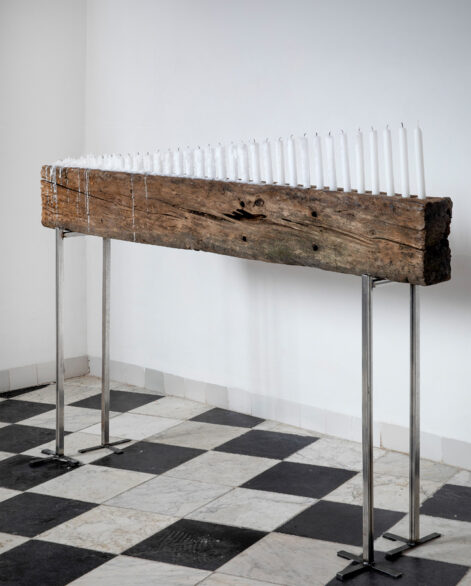
Hover for exhibition details
Colonial history
Antonio Obá’s installation touches on the history of Dutch-Brazil. The Oude Kerk has a direct relationship to this colonial rule. For example, the Brabant sailor Hendrick Corneliszoon Lonck (1568-1634) was buried in the church (the exact location is unknown). His military action as captain general of the West India Company allowed the establishment of the Dutch colony in 1630 in northeastern Brazil. Sailors and administrators of the WIC (and VOC) were frequent visitors to Oude Kerk. Some served as churchwardens, others were buried here. In the neighborhood around the Oude Kerk were the offices of the trading companies, as well as the sleeping quarters of the sailors. Through the WIC ships, slaves also arrived in the Netherlands and New Amsterdam (present-day New York), where they were at the foundation of new black communities in these cities. Path highlights and questions this shared history.
Installation
The installation includes sculptures and paintings. The works are located in symbolic places in the center of the church, including in the high choir and under the organ. In Path, Obá plays with the meaning of religious icons and rituals and reflects on the fusion of cultural traditions as a result of, among other things, colonial history. With his work Obá investigates the relationship between religion, power and social identity and he offers a new perspective on the history of the Oude Kerk and the world around us.
About Antonio Obá
Antonio Obá (Ceilândia,1983) lives and works in Brasilia. He studied Fine Arts at the Faculdade de Artes Dulcina de Moraes in Brazil, where he graduated in 2010. His artistic practice, in addition to sculpture and painting, consists of performances, in which he often uses his own body as a starting point. His works focus on the relationship between religion, power and social identity. He investigates phenomena such as liturgy and ritual, while also dealing with charged political issues, such as the legacy of colonialism and slavery in contemporary Brazil. By making traces of the past visible in his work, Obá connects social issues of our time with stories of the past and uncovers traces of histories that have been erased from the official historical narratives and political memory of nation-states.










